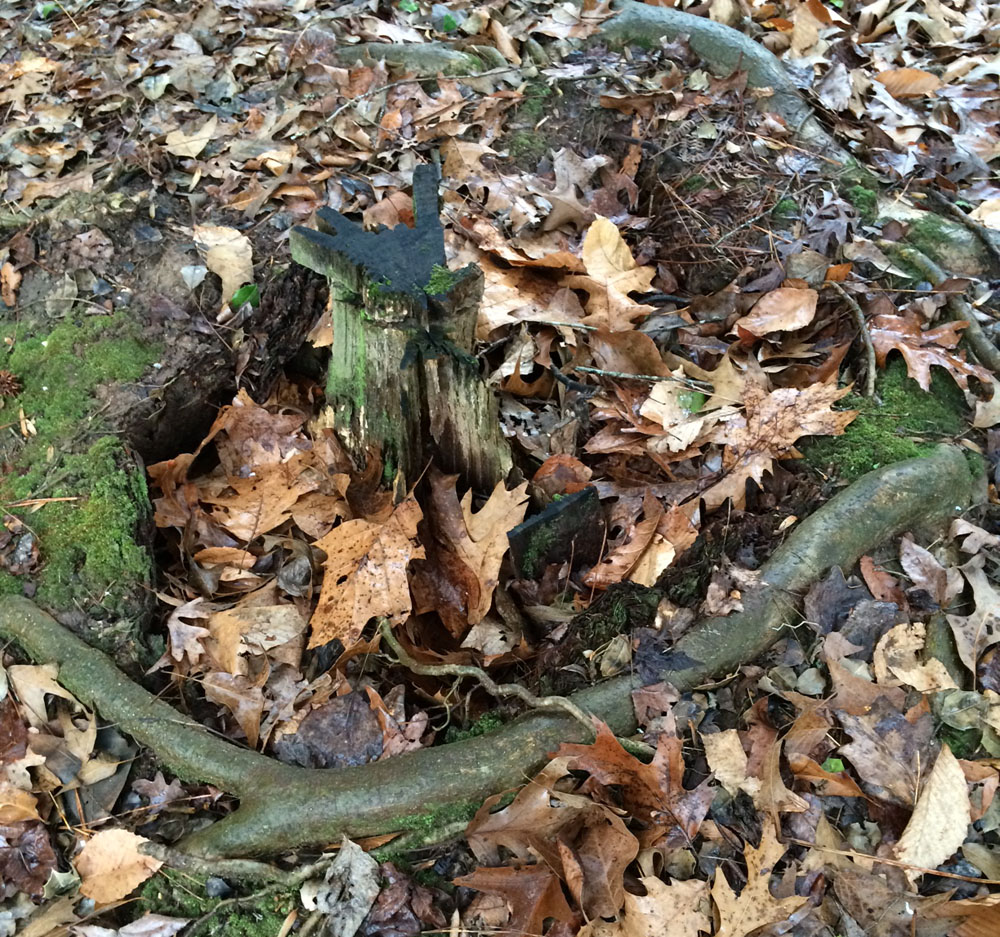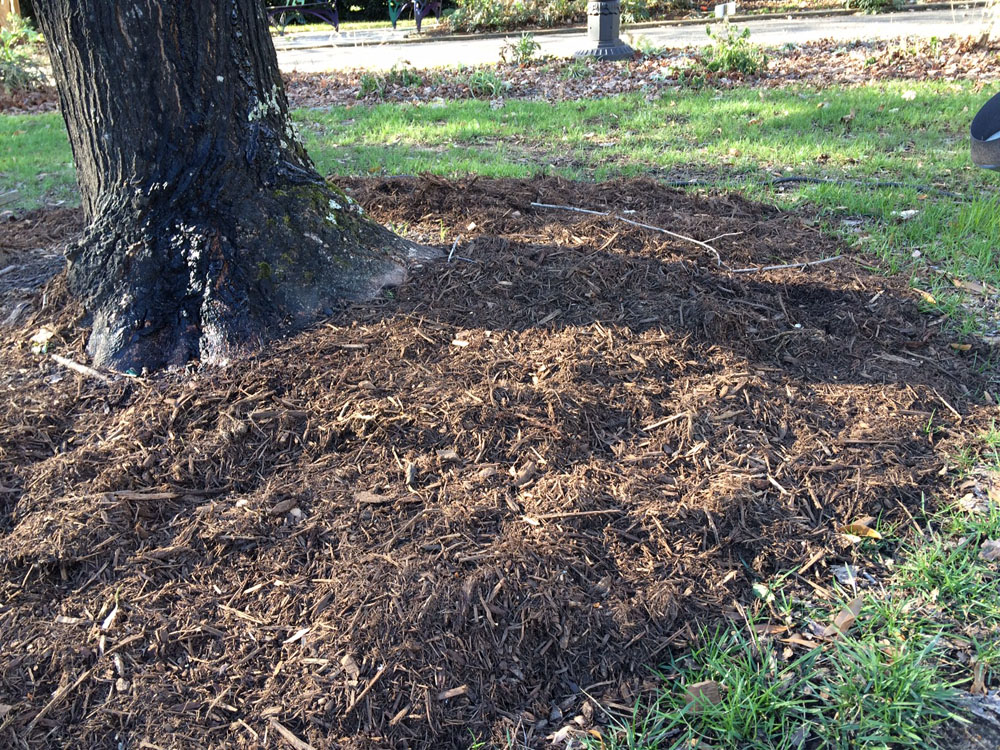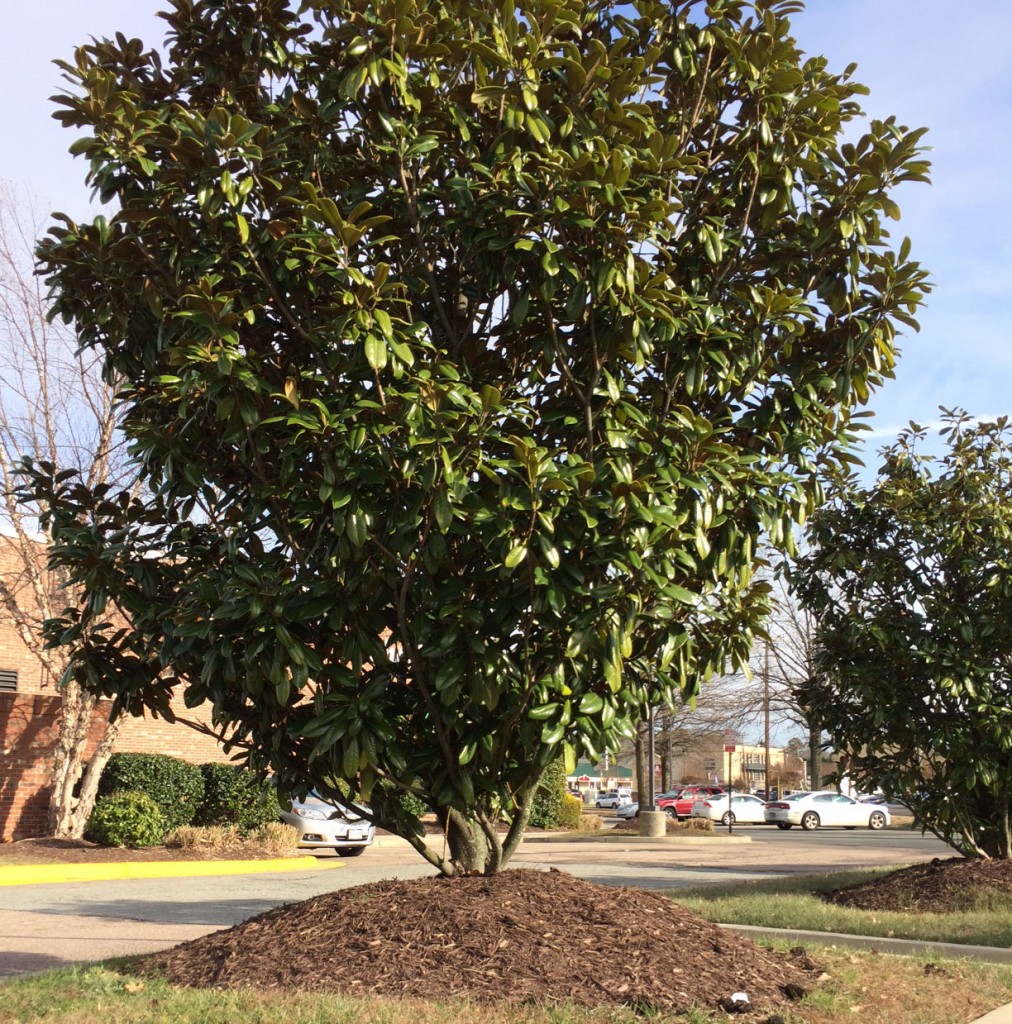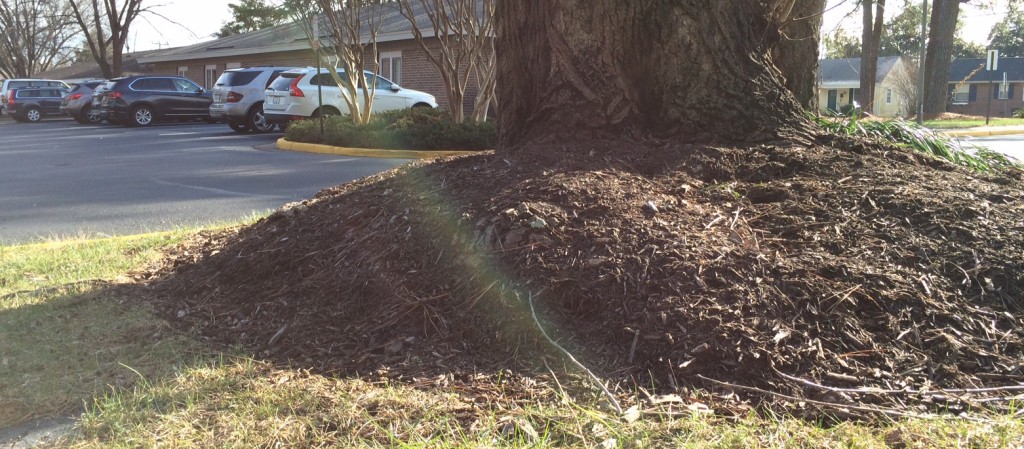Volcanoes vs. Doughnuts
There may be volcanoes in your yard. Don’t worry, they’re not active. They’re mulch volcanoes. But beware. They may be endangering your trees!
Those of us who are guilty of over-nurturing when we garden will sometimes pile mulch into deep pyramid-shaped hills that push up against the base of a tree. Although they are commonly found, horticulturists and savvy gardeners call these man-made menaces “mulch volcanoes.” They can be devastating to the tree.
Here’s how over mulching can contribute to the decline of a tree:
- Girdling: When mulch is piled around the trunk of a tree, the tree roots will grow into it, push against the tree and eventually strangle it. Called “girdling,” it happens when both the roots and the tree increase in size as they age. This chokes off the water and nutrients which flow between the roots and branches and also prevents the food produced in the leaves from reaching the roots. Girdling can also compress and weaken the trunk of a tree at ground level, causing it to lose stability and lean. Trees with girdling roots can suffer a slow decline in health and premature death.

The roots of this tree (not at Lewis Ginter Botanical Garden) grew to encircle or “girdle” its trunk, strangling it by robbing it of moisture and nutrients. This problem was likely caused by improper mulching.
- Disease and decay: Excess mulch piled high against a tree trunk will trap excess moisture and decaying organic material against the bark. This often leads to the onset of disease and decay around base of tree, again preventing food and energy from traveling up and down the tree. It also creates an ideal environment for bacterial rot, fungal rot and canker development in the trunk, which can be serious and sometimes fatal.
- Critters: Excess mulch is the perfect place for insects and small animals like voles and meadow mice to hide while they feed on your prized plants.
- Crusting: The surface of a thick mantle of mulch can bind into an impervious layer that repels water, preventing moisture from reaching the soil and the roots.
But mulch is important for keeping the soil cool and moist and helping to combat weed growth. Because it is organic matter, mulch attracts worms and other soil-dwelling invertebrates that help aerate and improve the soil. And mulch zones around trees and shrubs are extremely helpful in protecting the plants from the man-made threat of mowers and string trimmers.
So how to avoid making mulch volcanoes? Doughnut mulch! Senior Horticulturalist Elizabeth Fogel suggests spreading a ring of mulch in layer that is 1 – 3 inches thick at its outer edge and tapers gradually to nothing at the base of the tree. The tree stands happy and healthy in the “doughnut hole.” (And you don’t waste time and money over-mulching.)

“Doughnut” mulch is applied in a flat ring that tapers from 3 inches at its perimeter to nothing at the center, leaving the root flare standing free and clear.
“The root flare,” she explains, “is the area at the base of a tree trunk where the main stem tissue transitions to root tissue.” Look closely, and you can see that the bark on the main stem is rough, while the “bark” on the roots is smooth and waxy. “Keep the root flare above the soil line, dry and clear of soil, mulch and vines,” Fogel recommends.
So, proper mulch application is a simple matter of less is more. Just remember, don’t over mulch — doughnut mulch!

